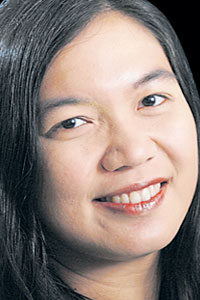Perhaps it is boring and repetitive to discuss double pricing. Yet new experiences have prompted me to revisit this thorny issue once again. Sad but true, double pricing occurs frequently in Thailand, and other parts of the world, and is either accepted or grudgingly tolerated by many people. To me, it probably depends on different cultures and regulations in each country or area.
About two years ago, a foreign reader cried foul over double pricing after reading my article and learning that admission fees to national parks are different for Thai nationals and foreigners. On the website, I explained to him that in Thailand it is widely known that admission fees to national and historical parks and museums for Thais and foreigners are different because Thais pay tax and that money goes to support these sites. This practice is also common in several other countries, especially developing nations, which give priority to their own citizens to visit national heritage sites at no or low costs.
Despite my explanation, he insisted the practice was unfair and claimed he should have paid the same rate as Thais because he was a resident who worked here and paid taxes to this country. Fortunately, a knight on a white horse came to my rescue: Another reader clarified that foreign residents who pay taxes to the Thai government are entitled to the same admission fees as Thais if they show their residential ID cards when buying tickets. That was a happy ending _ for that case only, however.
To me, double pricing in the form of admission fees to tourist attractions is acceptable if the rates have been officially designated and remain fixed. Nonetheless, double pricing is not acceptable if applied to food, commodity goods, souvenirs and services.
With regret, I have to admit that double pricing is commonly found in most Thai cities and at numerous tourist attractions. Not only foreigners but also Thais who come from other towns are at risk of arbitrary pricing. As a moviegoer, I hate buying popcorn, snacks and beverages at cinemas at doubled or tripled prices. As a traveller, I hate being overcharged by local taxis when visiting other towns.
The first bad experience occurred more than three decades ago when I was 10, a tuk-tuk driver in the southern town of Yala charged me 40 baht for taking me and my older cousins for a short distance instead of the 10 baht he charged the locals _ or we walk, he suggested.
Several more similar things happened to me when I grew up. At a weekend market in Chiang Mai, a vendor sold deodoriser dolls to me for 15 baht instead of 10 baht, probably because I was a tourist from Bangkok. I found out the truth after returning a 500 baht banknote to the vendor, who gave me wrong change, and strolling further to other stalls selling the same products.
Another terrible experience might be irrelevant to double pricing, but should be mentioned in order to prevent other people from being deceived. When I was 15, I was duped by a mango vendor in front of Chatuchak Park who had placed a misleading price tag over a pile of mangoes. The sign seemed to read "20 baht per kilo". Quite direct, but when I ordered 1kg of the fruit, the vendor charged me 40 baht and told me to read the sign again.
Then I saw the word "half" in barely invisible print between the words "baht" and "kilo". This trick has long been applied by dishonest vendors.
The other day, my friends and I hailed a taxi in front of Jim Thompson Museum to go to Queen Savang Memorial Museum nearby. Once we were in the taxi, the driver turned off the meter and said he wanted to charge us 40 baht. This practice is condemnable and often found at airports and malls popular among foreign tourists.
Fortunately, the world also has a bright side because there are many trustworthy sellers everywhere.
Last week, a telephone shop assistant returned a 1,000 baht banknote to me after I had wrongly counted money and given her an extra 1,000 baht while paying a bill.
About a month ago, I was impressed by the pricing system in Japan while shopping in Hokkaido. At Sapporo TV Tower, I was reluctant to shop for souvenirs and sweets for fear of double pricing. But a Thai guide who has been living in Japan for more than 20 years told me that each product is sold at the same price in Japan wherever I shop _ at popular tourist attractions, convenience stores, grocery shops or airports. At first I didn't believe this. I started to check the prices of similar products and found single pricing is real there.
This small good thing has sparked a ray of hope for standardised or at least fair pricing in this selfish world. Yet, my dream may never come true _ at least not soon, and maybe not here.
Pichaya Svasti is a travel writer for Life.
